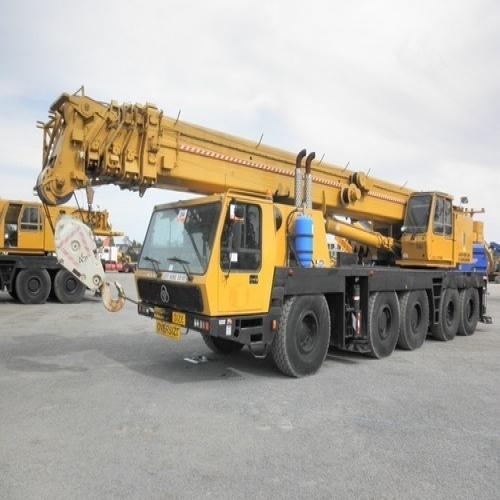We can use hydraulic Cylinders in different applications. We can use it in an application area where we need a high power mechanism to operate. These systems are working based on Pascal’s law of fluid pressure, which declares that when we apply pressure on a fluid, an equivalent pressure will exert in all directions of that fluid.
Hydraulic cylinders have many uses in the world of factories and production. Today, they are used in a wide range of industries like construction, manufacturing, and mining fields.
A failure of the hydraulic cylinder badly affects our working field. Here are some important aspects we need to consider before heading for repair.
Things to know before a Hydraulic Cylinder Repair
The first step in preparing is the cleaning of the unit to avoid the needless movement of dust particles, grease, and similar waste materials into the cylinder unit. We should repair it only in a clean area. So, before we go to repair, clean the dust and moisture in the place. After the cleaning of the unit, we should separate the hoses and tightly plug the ports and the hoses.
Hydraulic Cylinder Repair
The repair process is based on the type of cylinders. Wire ring or threaded head cylinders are the most general types of cylinders. We should clean all components of the cylinders with a petroleum contained solvent during the repair time.
General Aspects: Hydraulic Cylinder Repair
The repairing of threaded head cylinders has some differences in certain matters when we compare it with the repairing process of a wire ring cylinder. But we can understand some aspects are common in them. Let’s go to an example. If we find it tough because of the high pressure when we push the cylinder from the backside. When this happens, it is necessary to loosen the input valves of the cylinder. Moreover, we should inspect properly polished surfaces and seal replacement is necessary after the removal of them.
How to decrease hydraulic cylinder faults
Some studies show that some of the mechanical devices suddenly fail due to their design failure. Some others may fail because of the mistakes in handling without proper care. It is a highly useful machine that can be installed in moving vehicles like excavators. In most cases of a hydraulic equipment failure, we had to repair its hydraulic cylinder. It is an important portion of our hydraulic equipment. How can we know if our hydraulic cylinder needs repair?
If the cylinder does not do its job well, we don’t get a good outcome from it. Here are some common problems arrises on hydraulic cylinders
Bearing area problem
Deformation of the seals and their early failure happens when we place an excessive load on the piston steals and road. This is because the surface area of the wearing band is not capable of transferring the side thrust to the cylinder efficiently.
Cylinder bent rods
Insufficient material strength and rod diameter become a reason for cylinder rod bents. Similarly, the arrangement of improper cylinder mount can also cause its rod bents. When the rod bends it rises the leakage level and quickly shows the seal's early failure. We can use the Euler formula to check the loading of an allowable rod in a current application.
Since it is a complicated task to perform and we require a clear knowledge about the problem and the solution, otherwise it leads to heavy risk situations.
Ballooned tubes problem
Inadequate material strength and inadequate wall thickness for the operating pressure of the cylinder is the main cause of ballooning the cylinder tubes. The ballooned cylinder tubes reduce the proper tolerance between the tube wall and piston seal. This also allows bypassing high-pressure fluid. As a result, the seal life is reduced early.
Rod finish
To maintain the better life of the rod seal, the cylinder’s surface finish has an important role. Seal life easily decreased due to inadequate lubrication, which happened as a result of surface roughness becoming too smooth. If we need to increase the surface life of a cylinder, we must treat the cylinder's rod surface accurately. The use of suitable rod surface treatment in some applications can improve the service life of the rod.
Solutions for hydraulic cylinder failure
Corrosion in the barrel
Internal corrosion within the barrel is very hard to repair. In this case, we can choose the solution of the removal of the affected part. This problem indicates that the cylinder is not suitable for the place where it is now being used.
Dented rods and barrels
If we are going to use a cylinder with a dented rod or barrel, that can create problems for other elements like bearings, seals.
Too cold and hot temperature
Too cold and hot temperatures cause hydraulic cylinder failure easily. Early failure of the seals mainly results in the seal materials acting in a brittle way. We had to replace the seal which is affected by too hot or too cold temperature, for its perfect use.
Leaking seal problem
One of the main reasons for hydraulic cylinder failure is the leaking seals. It allows the critical fluids to leave the system. Some reasons for seal failure consist of the wrong size seal’s usage, unsuitable clearances between the seal and surface, etc.
Regular maintenance will help us to stop the majority of these failures.
Seal extrusion problem
Seal extrusion is another issue of the hydraulic cylinder. Another type of seal material is essential if the seal starts to bulge into the extrusion gap.
Conclusion
All hydraulic cylinders are made and designed differently. Some of them are easily corrected by appropriate repair. The hydraulic cylinder repair process wants a careful checkup. In most repairing cases like honing tubes and fabricating rods, we can ask the help of a hydraulic cylinder repair service. They can perform the task easier because of their experience in the field and quickly find the root cause of the damage.
0







